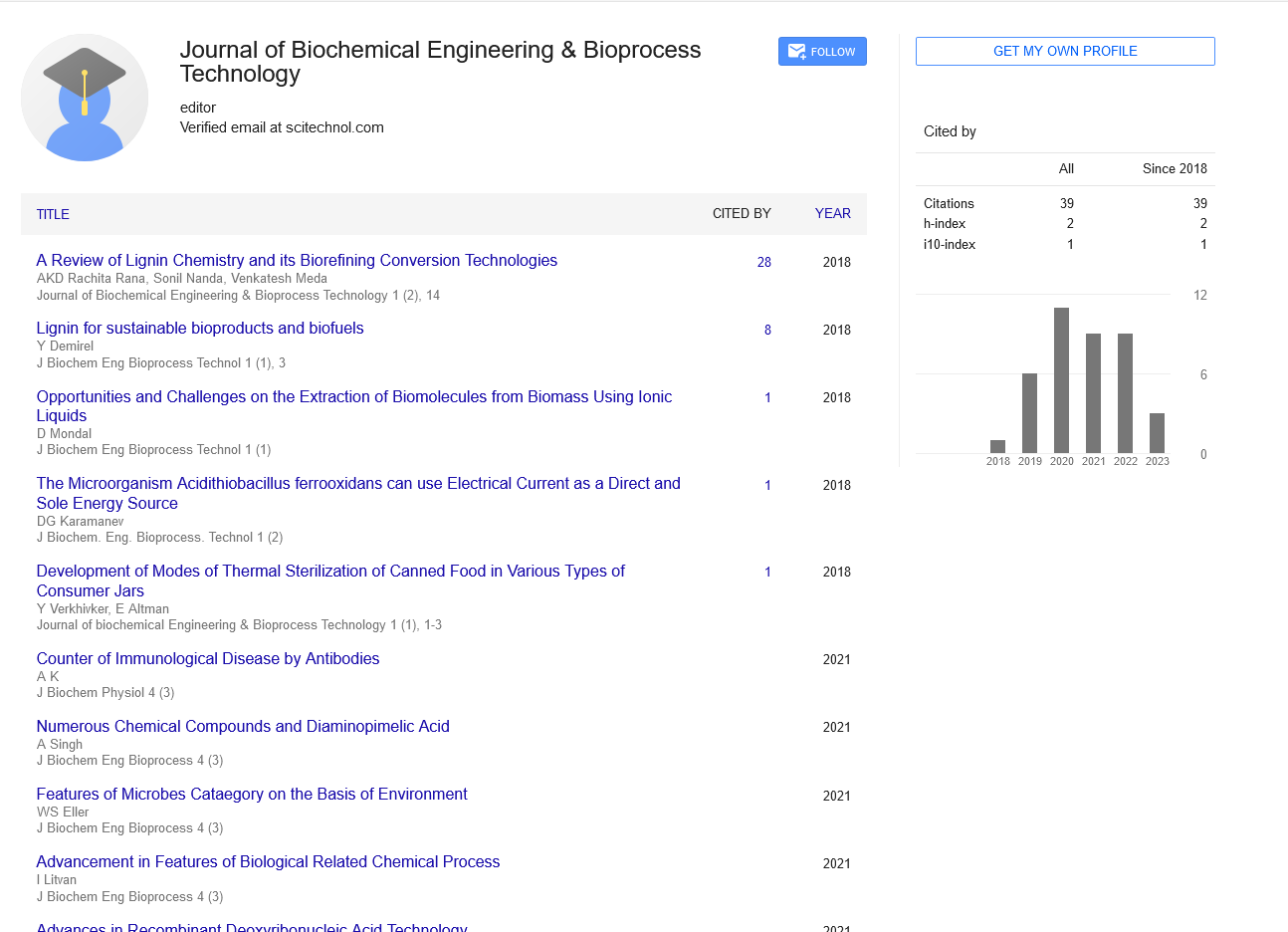Perspective, J Biochem Eng Bioprocess Vol: 6 Issue: 1
Emerging Trends and Future Technologies in Pharmaceutical Bioprocessing
Prabhakar Mohanty*
1Department of Cultural Studies, University of Tezpur, Tezpur, Assam, India
*Corresponding Author: Prabhakar Mohanty
Department of Cultural Studies,
University of Tezpur, Tezpur, Assam, India
E-mail: prabhakarm@gmail.com
Received date: 15 February, 2023, Manuscript No. JBEBT-23-96106;
Editor assigned date: 17 February, 2023, Pre QC No. JBEBT-23-96106(PQ);
Reviewed date: 03 March, 2023, QC No. JBEBT-23-96106;
Revised date: 10 March, 2023, Manuscript No: JBEBT-23-96106(R);
Published date: 17 March, 2023, DOI: 10.35248/jbebt.1000052
Citation: Mohanty P (2023) Emerging Trends and Future Technologies in Pharmaceutical Bioprocessing. J Biochem Eng Bioprocess 6:1.
Description
The pharmaceutical industry is constantly evolving, and bioprocessing plays an important role in the development and production of innovative drugs. As technology advances and new research emerges, emerging trends and future directions are shaping the way bioprocessing is utilized in the pharmaceutical industry. One of the emerging trends in pharmaceutical bioprocessing is the use of single-use technologies. Traditionally, bioprocessing systems have been composed of large, stainless-steel vessels that require extensive cleaning and sterilization between batches. However, single-use systems allow for more flexibility and reduce the risk of contamination. Single-use bioreactors, for example, eliminate the need for cleaning and sterilization by utilizing disposable plastic bags. This not only saves time and reduces costs, but it also allows for more frequent changes between batches, enabling greater process control and optimization.
Another trend in bioprocessing is the development of continuous manufacturing. Continuous manufacturing involves the use of a continuous bioreactor system that allows for a steady, uninterrupted flow of product. This approach contrasts with the traditional batch processing, which involves stopping and starting the manufacturing process between batches. Continuous manufacturing has several advantages, including increased efficiency, reduced waste, and improved product quality. Additionally, continuous manufacturing allows for real-time monitoring and control of the manufacturing process, enabling more rapid response to process deviations. The use of Artificial Intelligence (AI) and Machine Learning (ML) is another emerging trend in bioprocessing. These technologies can be utilized to analyze large datasets and improve process optimization. For example, AI algorithms can be trained to identify potential issues in real-time and provide predictive analytics to help operators make better decisions. Similarly, ML can be used to optimize process parameters and predict product quality based on historical data. As these technologies continue to advance, they have the potential to revolutionize the bioprocessing industry, leading to more efficient and effective production processes.
Another area of focus in pharmaceutical bioprocessing is the development of personalized medicine. Personalized medicine involves tailoring treatments to an individual's unique genetic makeup, resulting in more effective and targeted therapies. Bioprocessing plays an essential role in the development of these therapies, particularly in the area of cell and gene therapies. As our understanding of genetics and disease continues to grow, personalized medicine is poised to become an increasingly important area of focus in the bioprocessing industry. Finally, there is a growing interest in sustainability and environmental stewardship within the bioprocessing industry. As the demand for biopharmaceuticals continues to increase, there is a need to develop more sustainable manufacturing processes that reduce waste and conserve resources. One approach to achieving this goal is the use of green chemistry principles, which emphasize the use of non-toxic, renewable materials and processes. Additionally, there is a growing interest in the use of renewable energy sources, such as solar and wind power, to reduce the environmental impact of bioprocessing facilities.
In conclusion, the bioprocessing industry is undergoing rapid change, driven by technological advances, evolving market demands, and a growing interest in sustainability. As emerging trends and future directions shape the bioprocessing industry, there is a need for continued innovation and collaboration between researchers, manufacturers, and regulatory agencies. By embracing these trends and investing in new technologies, the pharmaceutical bioprocessing industry is well-positioned to continue delivering innovative, lifesaving treatments for years to come.
 Spanish
Spanish  Chinese
Chinese  Russian
Russian  German
German  French
French  Japanese
Japanese  Portuguese
Portuguese  Hindi
Hindi 